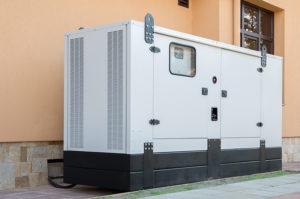
It’s safe to say downtime just isn’t an option in today’s technology-driven education landscape. With IT networks serving as the backbone for modern higher learning environments, nobody earns a passing grade when power is interrupted. When outages bring down campus networks, both online and in-person classrooms that rely on the internet or digital programs grind to a halt.
Prior power outage incidents can serve as good lessons for campus facility leaders looking to ace the test when it comes to disaster preparedness in 2023. Below are some recent examples of what can happen when university facilities get left in the dark:
Three Challenging Campus Blackouts
- Double the downtime. A pair of power outages forced classes to be canceled twice in one week at the University of Connecticut Storrs campus. All in-person and online classes had to be canceled on March 21 and again on March 24 due to a lack of electricity. The university reported that repair work on damaged electrical infrastructure was ongoing.
- Storms causes power supply to flunk out. On June 4, the entire campus of Central Washington University in Ellensburg, Wash., was left in the dark for two hours after a thunderstorm knocked out power. Some community members were left stranded in elevators and numerous events had to be canceled after a lightning strike took out part of a circuit.
- Three-day outage tests patience. It took three days to restore electricity to Stanford University after a June 25 outage knocked out power to nearly 9,000 customers in California’s San Mateo County. The utility ultimately established a temporary generator network to provide electricity until the university and other customers could be returned to the main power grid. The switch between the two resulted in another outage, but enabled crews to complete the operation needed to return power.
Homework is Required
Power outages can come from a variety of causes, but Mother Nature is often one of the primary culprits. Severe weather events such as hurricanes, thunderstorms, monsoons and heat waves can all cause serious power outages and complications for facilities that aren’t prepared. And the risk of weather-related power events appears as though it will only increase as extreme weather events continue growing in intensity.
 While power failures can be unavoidable at times, an uninterruptible power supply (UPS) – often deployed in conjunction with a backup generator and power distribution units (PDUs) – can deliver reliable power during outages so that critical equipment stay up and running. Advanced lithium-ion batteries can be deployed with these solutions to help address challenges of modern education environments, reducing maintenance complexities as campus learning environments become more decentralized amid digital transformation.
While power failures can be unavoidable at times, an uninterruptible power supply (UPS) – often deployed in conjunction with a backup generator and power distribution units (PDUs) – can deliver reliable power during outages so that critical equipment stay up and running. Advanced lithium-ion batteries can be deployed with these solutions to help address challenges of modern education environments, reducing maintenance complexities as campus learning environments become more decentralized amid digital transformation.
Education facilities should assess the effectiveness of their power management strategies in context of their current IT framework and look to integrate hardware devices with power management software tools to optimize continuity. Operators should also leverage power monitoring services to help IT staff monitor equipment and keep critical IT applications running during outages.
Monitoring software can also go hand-in-hand with other advancing technology tools, such as predictive analytics. Providing the capability gather information on power trends over time, these types of resources allow IT teams to leverage data insights to make better decisions and create efficiencies in their operations through proactive maintenance.
More Than A Passing Grade
Since the pandemic, digitalization has continued to transform the learning environment on campuses across the country. Higher education facilities have deployed a multitude of advanced technologies to supplement the on-campus experience for students, including digital courses and whiteboards, virtual or augmented reality, distance learning, and artificial intelligence, to name a few.
As this trend continues to unfold, the demand on infrastructure to accommodate a flexible, always-on learning environmental will only grow. Campus facility managers should routinely assess their IT environments to ensure they are in the best position to support evolving expectations. By having the right backup power system deployed with the latest technologies, campus facilities can be better positioned when it comes to supporting the educational environment.
Ed Spears is a technical marketing manager in Eaton’s Critical Power & Digital Infrastructure Division in Raleigh, North Carolina. He can be reached at [email protected]. This is his first article for Facilities Manager.
Power Tools
Seeks to engage multiple voices from among FM ranks to bring fresh insight and real knowledge from the trenches on what’s working in planning and implementation for energy-related projects and innovations. To contribute, contact [email protected].
See all Power Tools.


